The verdict: The high-performance GS F falls short of the lofty expectations set by its price.
Versus the competition: Although it has the interior and look to match other high-performance luxury sedans in this price range, the GS F falls short on driver engagement.
Even though I prefer cheap eats, I see the value and appeal of fine dining — the kind that requires reservations, real shoes and maybe even utilizing the valet (which violates my free-parking ethos). But if I'm going to pony up for it, everything about the experience better match up to the price, from the service to the ambiance. And the food better be worth it, too, or I'm going to feel cheated and stop by the taco truck on the way home.
The 2017 Lexus GS F has a fine-dining price tag, and with that comes a lot of expectations, especially when it comes to performance — the main course of any high-performance sedan. Look around this price range and you'll find formidable competitors: the Audi S6, the Mercedes-Benz AMG E43 and the Cadillac CTS-V. Compare all four here.
Lexus has made a few key changes for 2017, the most important being the addition of an active suspension. Compare the new version to last year's model here. Be aware that the GS F is a distinct model, not to be confused with a lesser GS 200t or a GS 350 equipped with the optional F Sport package, which adds modest performance and cosmetic upgrades.
Styling
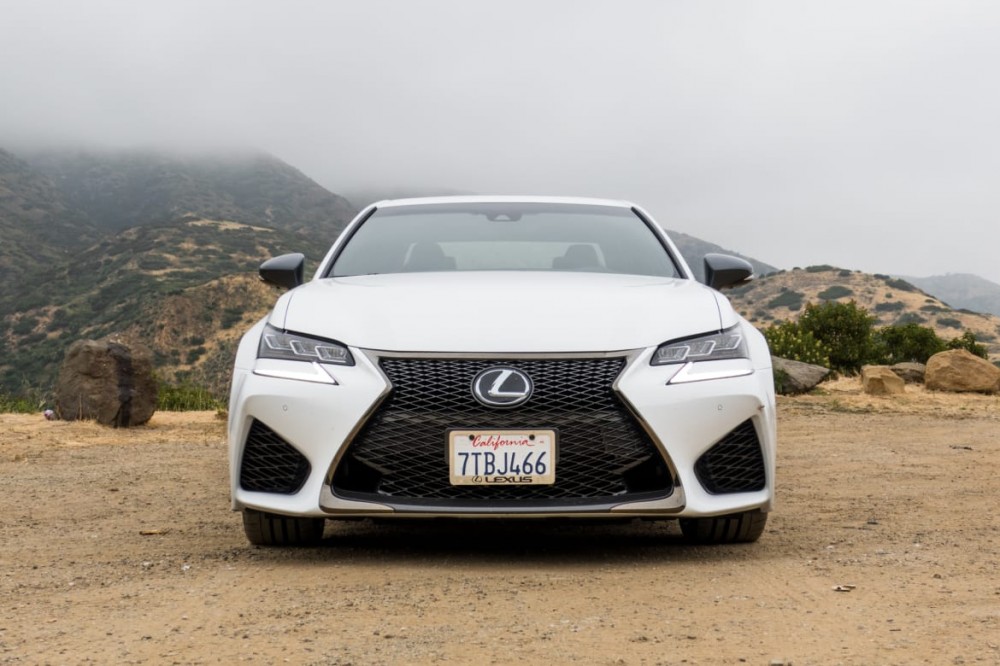
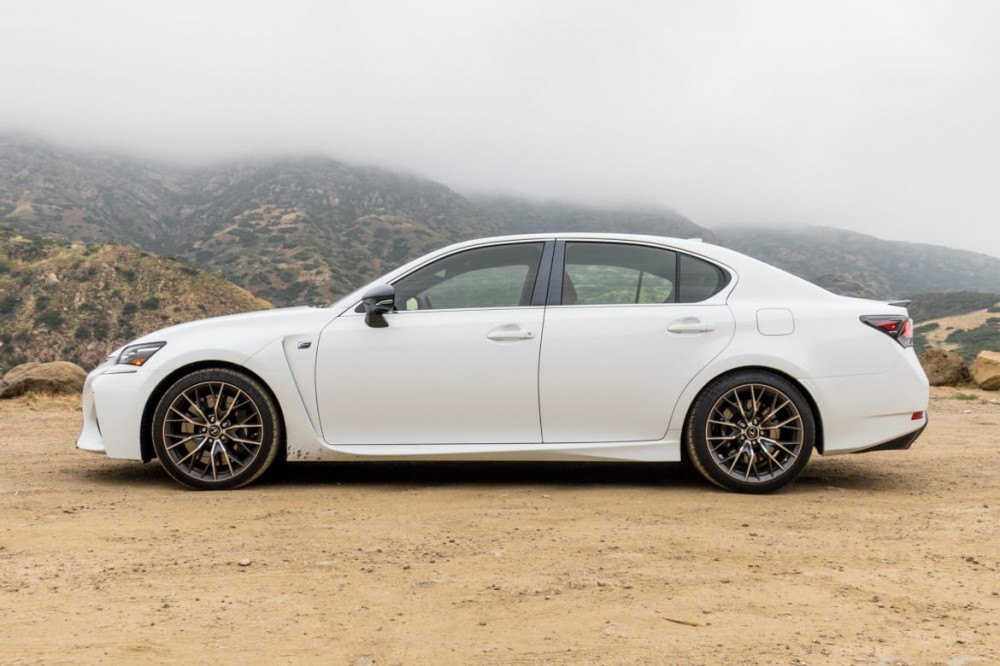
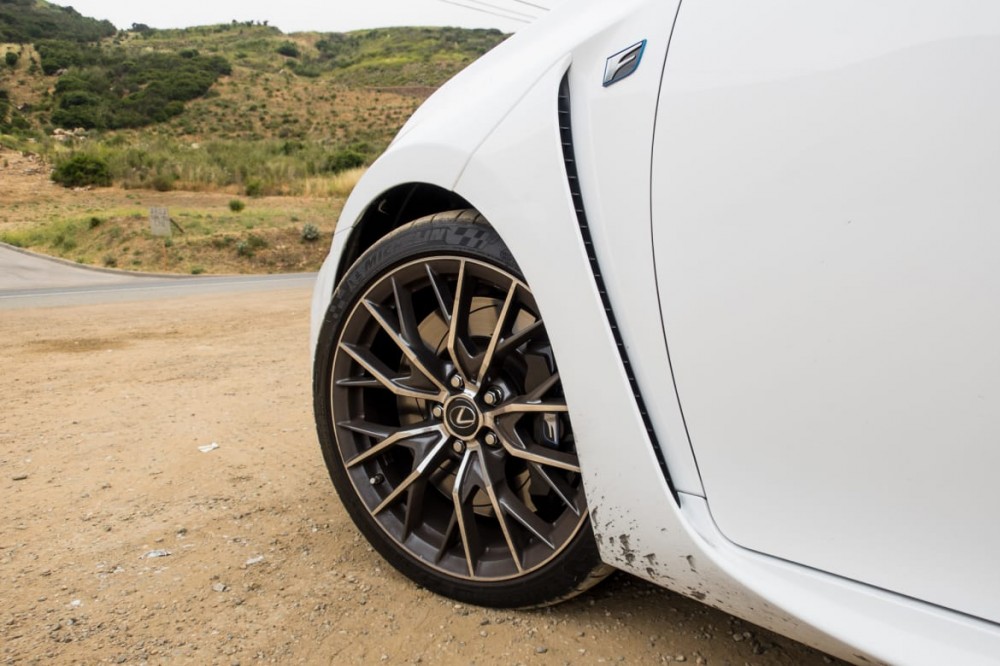
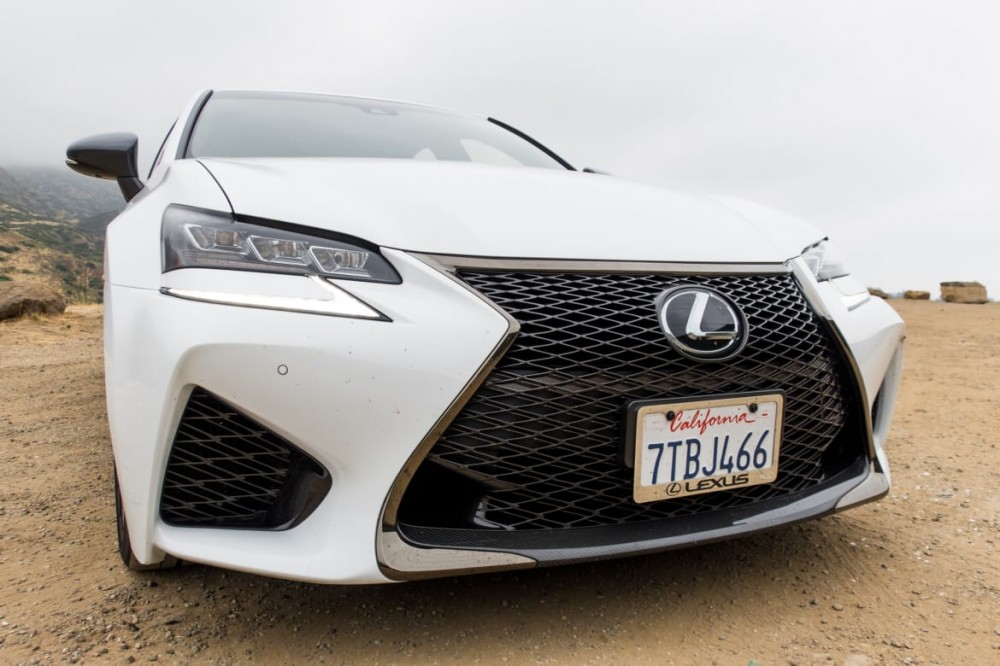
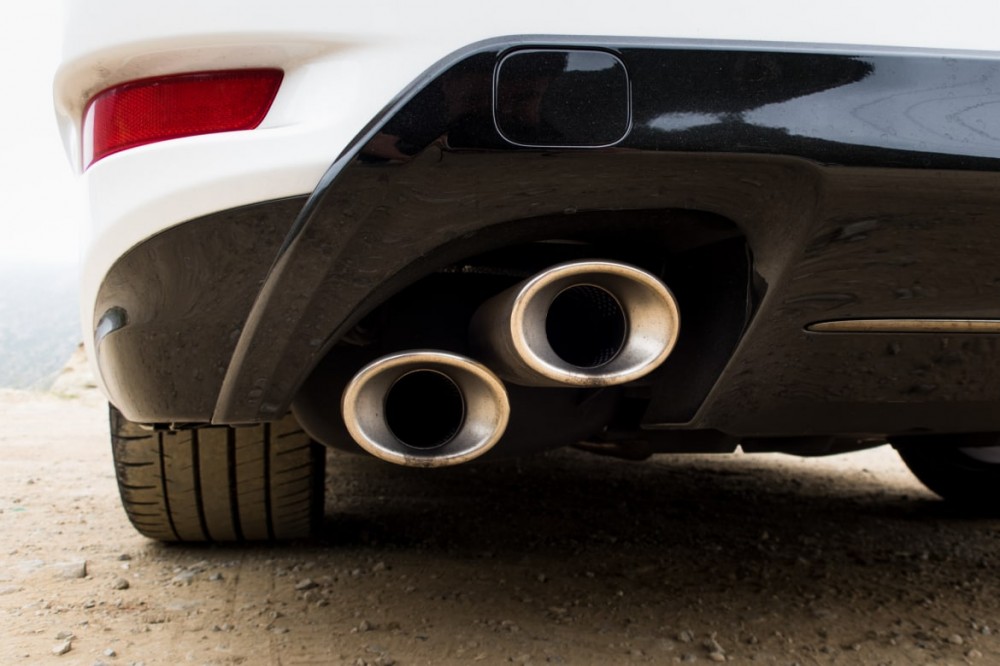
There are a few details that distinguish the GS F from regular GS models in addition to its distinctive V-8 exhaust note. Up front, the spindle grille gets the mesh treatment, and the front bumper has additional air inlets. The rear features a carbon-fiber-wrapped lip spoiler, a rear diffuser and quad exhaust pipes — a Lexus F Series signature. Inside are carbon-fiber trim pieces, seats adorned with the "F" logo and, in our test vehicle, a Circuit Red color scheme right from BMW's styling playbook.
Overall, the GS F looks close to regular GS models; it wears its high-performance credentials modestly until you get up close.
High-Performance Parts
Forced-air induction has become the new normal for high-performance luxury cars, but Lexus has forgone turbocharging and stuck with large displacement. The GS F has the same 5.0-liter V-8 found in the RC F and the LC 500, which makes 467 horsepower and 389 pounds-feet of torque. The GS F comes only with rear-wheel drive and an eight-speed automatic transmission. Brembo brakes are also standard for added stopping power, with 14.9-inch slotted rotors up front and 13.5-inch slotted rotors in the rear.
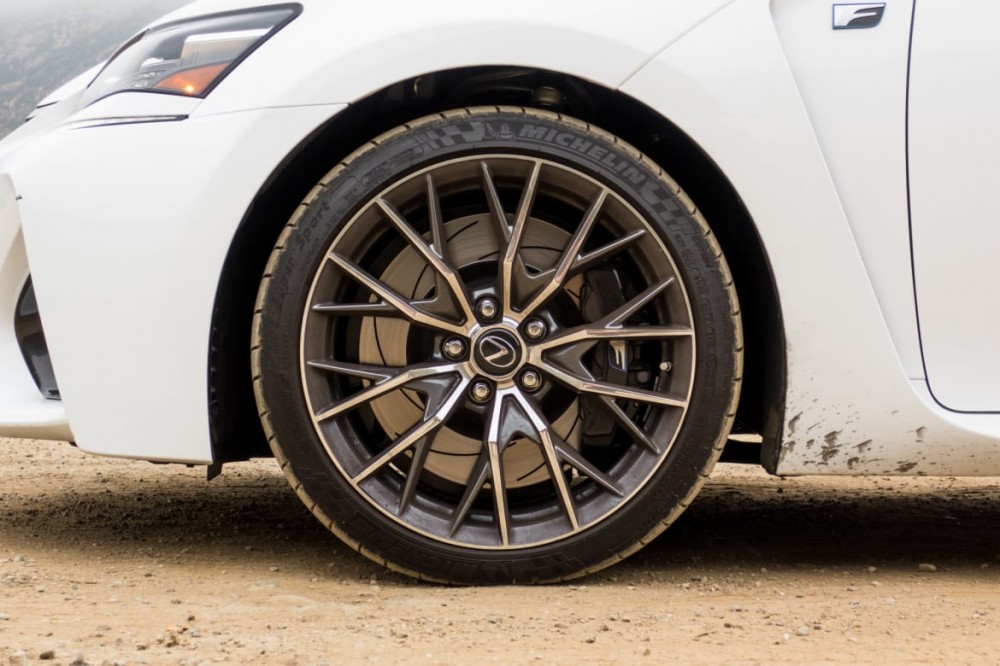
The 2017 model year also brings suspension updates to the GS F. There's now a linear adaptive variable suspension that can adjust shock absorber firmness to keep the car more balanced during cornering. There's also a torque-vectoring differential that can shift power between the left and right drive wheels. The diff has selectable settings: Normal (for everyday use), Slalom (for an emphasis on steering response) and Track (high-speed handling and stability).
Fuel-economy figures are an EPA-estimated 16/24/19 mpg city/highway/combined on premium gasoline.
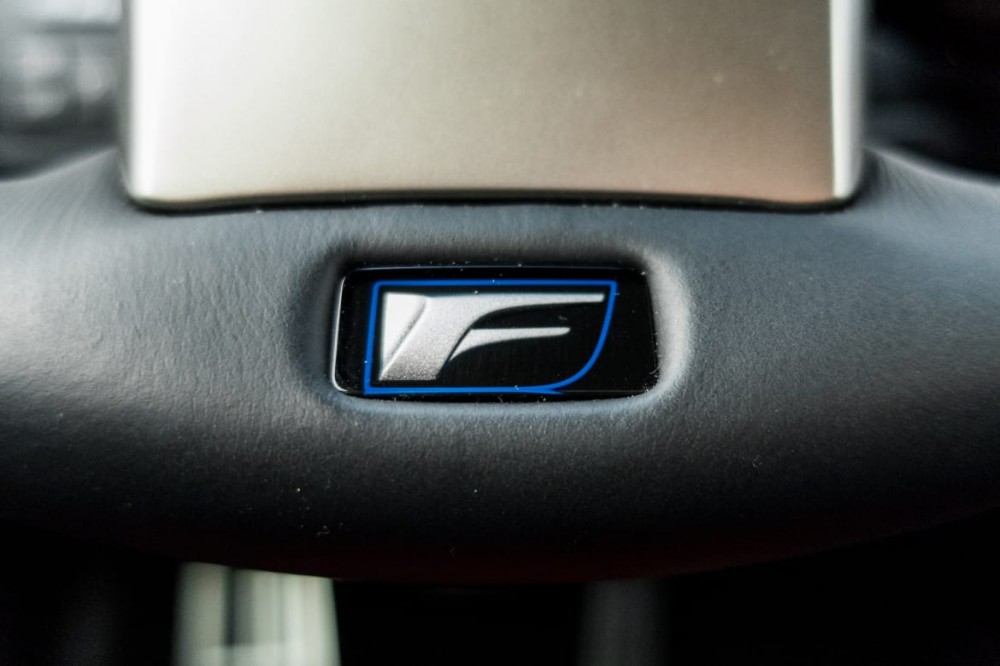
But How Does It Drive?
On paper the GS F has impressive credentials: a claimed zero-to-60-mph time of 4.5 seconds, a new adaptive suspension and that trick rear differential. From behind the wheel, though, the experience is lacking for a few important reasons.
First, Lexus just doesn't do steering feel well. Although the wheel had decent heft to it, feedback was lacking and the nose felt a bit languid on turn-in. This isn't helped by the fact that the GS F is not svelte; it's 4,034 pounds, and the suspension struggles to handle that weight effectively. Dive into a corner and the heft pushes the GS F into understeer.
Another problem I had with the GS F was keeping the engine in the power band. Though the throttle proved to be responsive, maximum torque doesn't come on until 4,800 rpm, which means you have to really lean into the engine to sling a GS F back up to speed.
Although the wheel had decent heft to it, feedback was lacking and the nose felt a bit languid on turn-in.
The GS F's transmission and engine work well together. I've had problems with Lexus' eight-speed automatic hunting around a lot, but it was solid in this application. It seems like the additional power from the V-8 makes it easier for the transmission to pick a gear and stick with it. Grip from the standard Michelin Pilot Super Sport summer tires is plentiful, though the tires make a lot of noise when the car is pushed.
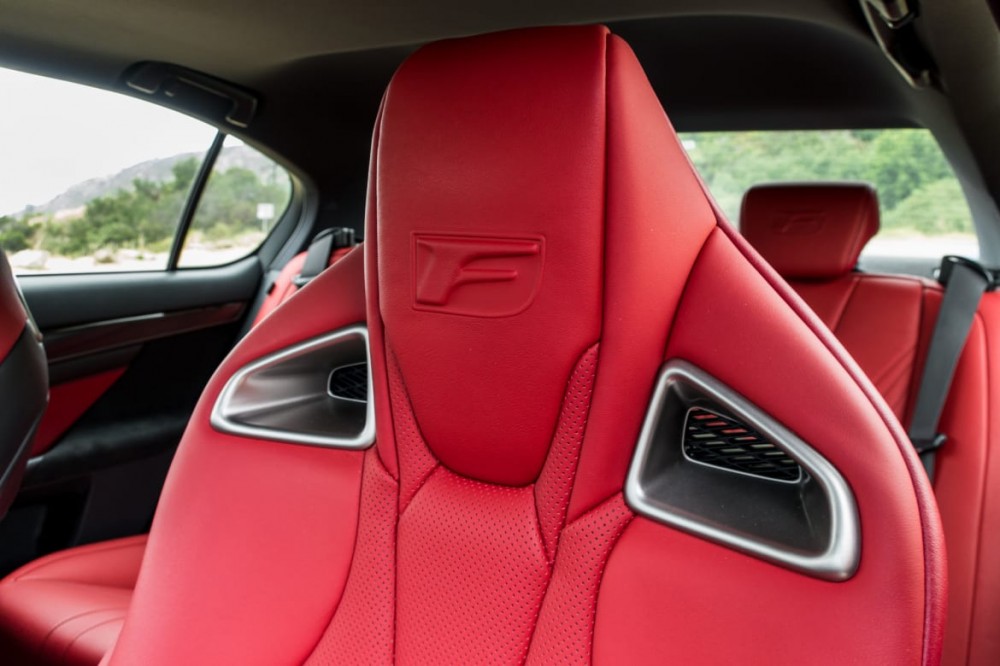
Comfortable Yet Frustrating Interior
I'm a fan of the GS F's cabin. It's comfortable and has great materials. I was similarly enamored with the red upholstery in my test car, which played well against the white exterior and added necessary visual contrast. The front seats are extremely comfortable — bolstered without being too aggressive — and the standard heated and ventilated seats are tied to the climate control, so they can be instructed to turn on automatically to help regulate the temperature.
As much as I liked the rest of the interior, however, I disliked the multimedia system. This complaint is starting to get repetitive, but Lexus needs to do something about it (and fast) because the system is way too hard to control as it's currently configured.
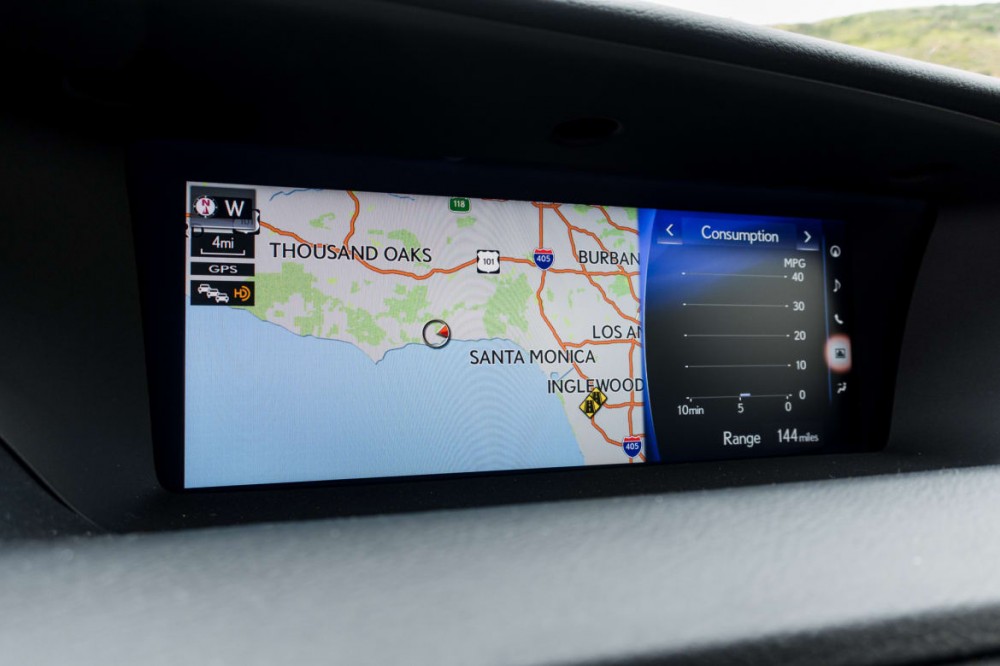
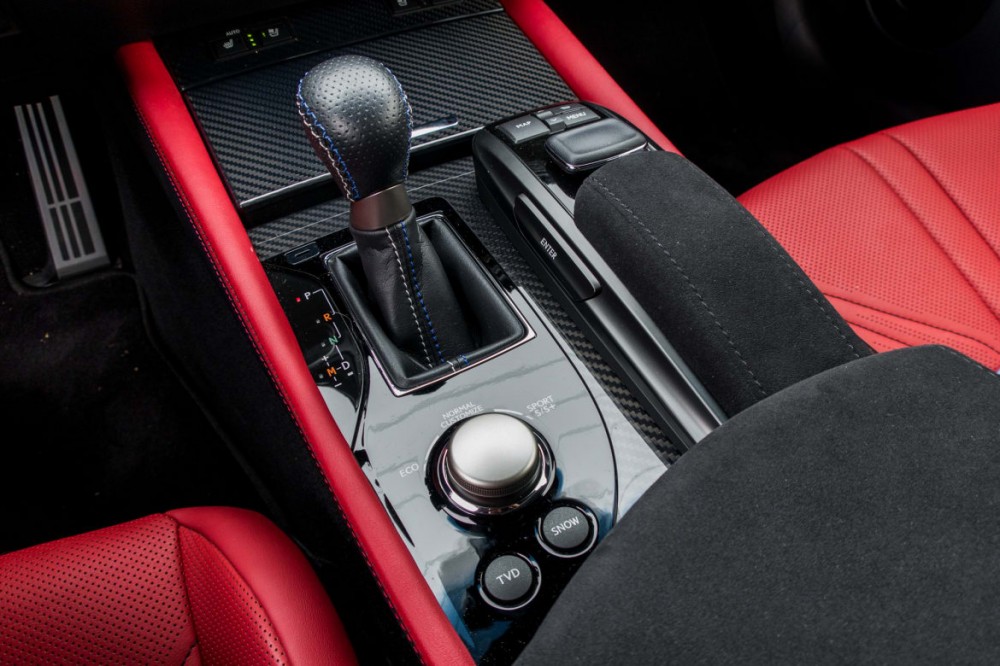
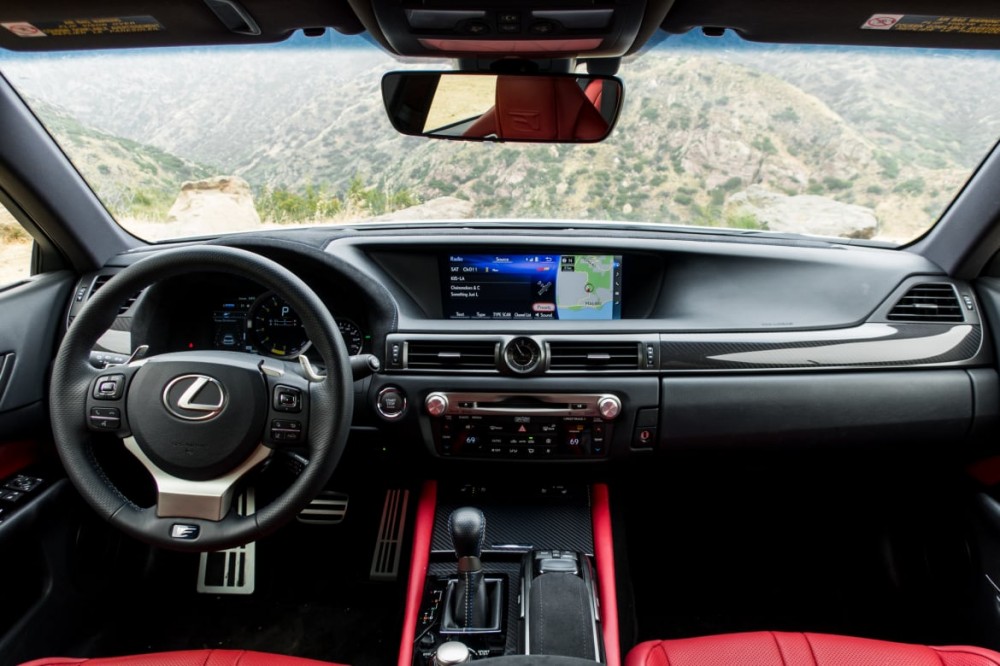
The small joystick moves a mouselike cursor around the screen. It's kind of cool at first: When you move from button to button, the joystick transmits a small tactile bump to let you know. But then you quickly realize that actually using the system is cumbersome and distracting; confirming that you've selected what you intended seems to require extra glances. I found it difficult to use the system and safely operate the vehicle at the same time.
Where's the Value?
The GS F starts out expensive ($84,915 including destination charges) and just gets even more so. My test vehicle added a Mark Levinson premium sound system for $1,380, plus 19-inch, 10-spoke alloy wheels ($600), bringing the total cost to $86,895. That's a lot of money whichever way you slice it, and the unfortunate truth is that the GS F doesn't offer enough luxury or performance to justify its price tag, especially when like-priced competitors overwhelm it both on the spec sheet and on the road.
Cadillac says the CTS-V does the sprint from zero-to-60 in 3.7 seconds, and it's capable of 200 mph. By Audi's estimation, the S6 is only a touch faster to 60 mph than the GS F (4.4 seconds), but it also costs more than $13,000 less.
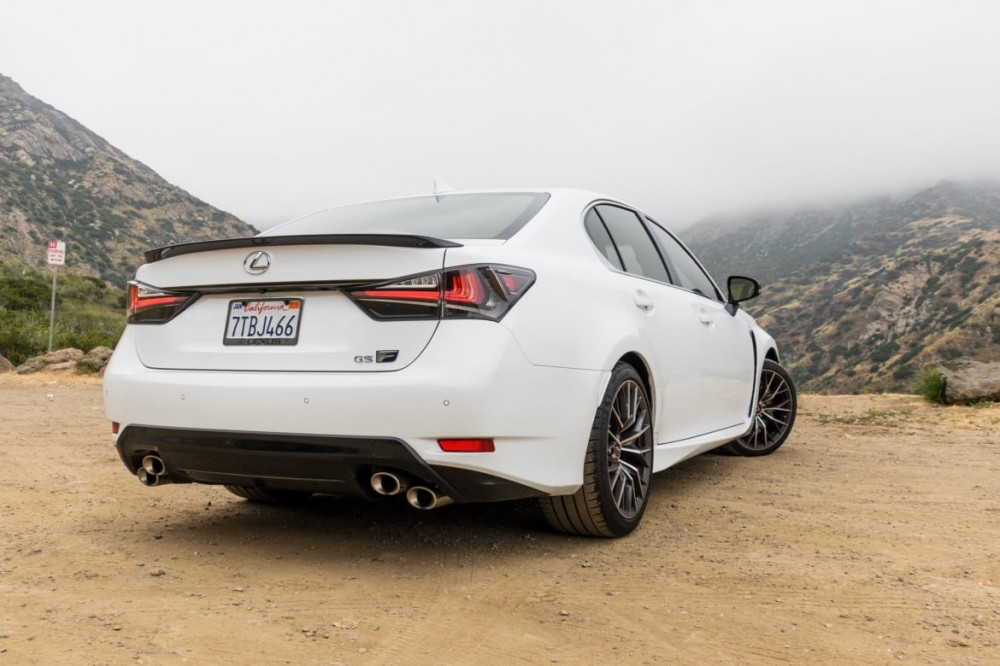
For the GS F to remain competitive with these vehicles in this price range, it needs more of everything: more power, a better suspension and, above all, better steering feel. Lexus has done promising work with its designs of late (the LC 500 being the prime example), but it's time to put up on the performance front, as well.








